Peugeot 2008 vs Skoda Kodiaq - Differences and prices compared
Costs and Efficiency:
When it comes to price and running costs, the biggest differences usually appear. This is often where you see which car fits your budget better in the long run.
Peugeot 2008 has a significantly advantage in terms of price – it starts at 24500 £, while the Skoda Kodiaq costs 36800 £. That’s a price difference of around 12386 £.
Fuel consumption also shows a difference: Skoda Kodiaq manages with 0.40 L and is therefore significantly more efficient than the Peugeot 2008 with 4.90 L. The difference is about 4.50 L per 100 km.
As for range, the Peugeot 2008 performs significantly better – achieving up to 406 km, about 283 km more than the Skoda Kodiaq.
Engine and Performance:
Power, torque and acceleration are the classic benchmarks for car enthusiasts – and here, some clear differences start to show.
When it comes to engine power, the Skoda Kodiaq has a clearly edge – offering 265 HP compared to 156 HP. That’s roughly 109 HP more horsepower.
In acceleration from 0 to 100 km/h, the Skoda Kodiaq is clearly perceptible quicker – completing the sprint in 6.30 s, while the Peugeot 2008 takes 8.30 s. That’s about 2 s faster.
In terms of top speed, the Skoda Kodiaq performs somewhat better – reaching 231 km/h, while the Peugeot 2008 tops out at 206 km/h. The difference is around 25 km/h.
There’s also a difference in torque: Skoda Kodiaq pulls noticeable stronger with 400 Nm compared to 270 Nm. That’s about 130 Nm difference.
Space and Everyday Use:
Cabin size, boot volume and payload all play a role in everyday practicality. Here, comfort and flexibility make the difference.
Seats: offers more seating capacity – vs .
In curb weight, Peugeot 2008 is evident lighter – 1263 kg compared to 1684 kg. The difference is around 421 kg.
In terms of boot space, the Skoda Kodiaq offers significantly more room – 910 L compared to 434 L. That’s a difference of about 476 L.
In maximum load capacity, the Skoda Kodiaq performs distinct better – up to 2105 L, which is about 638 L more than the Peugeot 2008.
When it comes to payload, Skoda Kodiaq clearly perceptible takes the win – 563 kg compared to 447 kg. That’s a difference of about 116 kg.
Who wins the race?
The Skoda Kodiaq proves to be leaves the rival little chance and therefore becomes our DriveDuel Champion!
Skoda Kodiaq is the better all-rounder in this comparison.
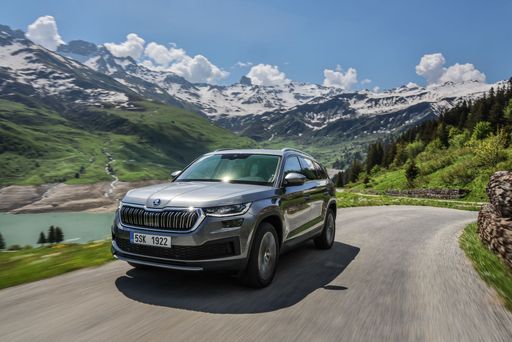 @ Škoda Auto a.s. / Škoda Storyboard
@ Škoda Auto a.s. / Škoda Storyboard
Skoda Kodiaq
Costs and Consumption
View detailed analysis
Engine and Performance
View detailed analysis
Dimensions and Body
View detailed analysis
Peugeot 2008
The Peugeot 2008 is a stylish, city-friendly crossover that packs big character into a compact package, turning mundane errands into a mildly entertaining drive. Its clever interior layout, polished looks and confident ride make it a smart choice for buyers who want practical daily sense with a touch of flair.
details @ Peugeot / Stellantis Media
@ Peugeot / Stellantis Media
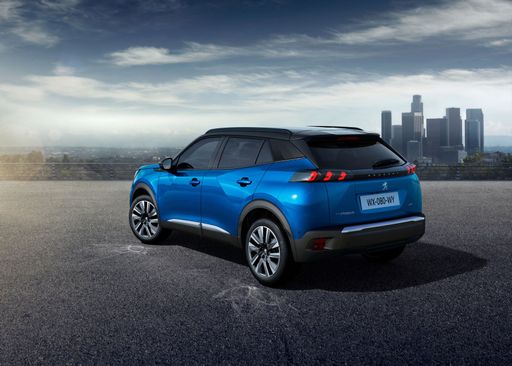 @ Peugeot / Stellantis Media
@ Peugeot / Stellantis Media
 @ Peugeot / Stellantis Media
@ Peugeot / Stellantis Media
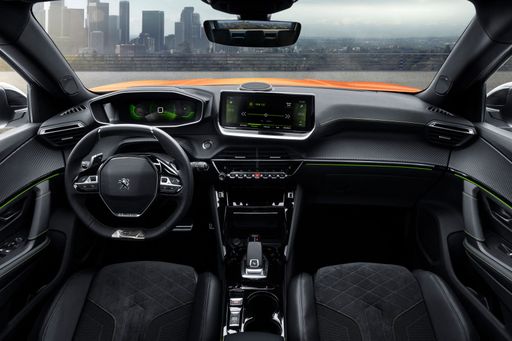 @ Peugeot / Stellantis Media
@ Peugeot / Stellantis Media
Skoda Kodiaq
The Skoda Kodiaq blends sensible practicality with surprising style, so families and weekend adventurers get roomy comfort without looking like a moving van. It feels calm and composed on the road, packs clever storage and user-friendly tech, and manages to deliver a near-premium vibe without the pretension.
details @ Škoda Auto a.s. / Škoda Storyboard
@ Škoda Auto a.s. / Škoda Storyboard
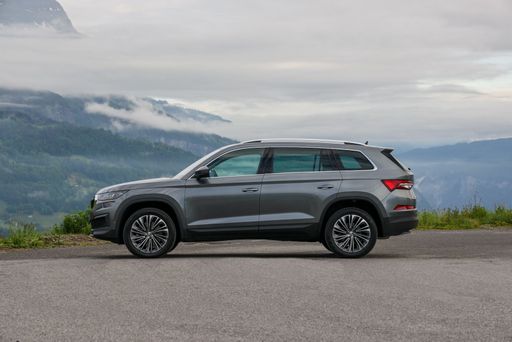 @ Škoda Auto a.s. / Škoda Storyboard
@ Škoda Auto a.s. / Škoda Storyboard
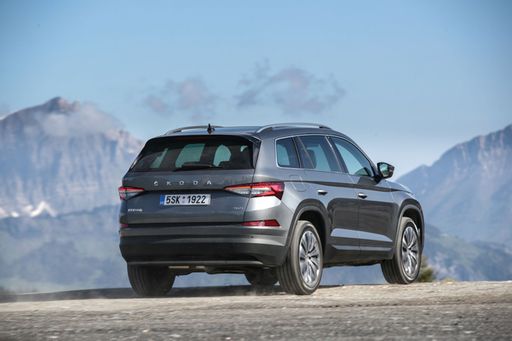 @ Škoda Auto a.s. / Škoda Storyboard
@ Škoda Auto a.s. / Škoda Storyboard
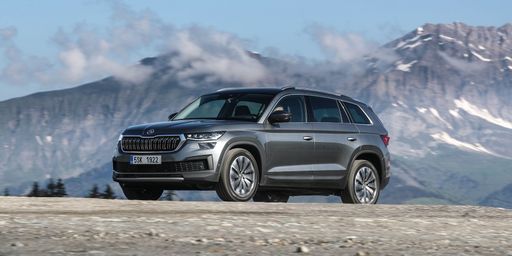 @ Škoda Auto a.s. / Škoda Storyboard
@ Škoda Auto a.s. / Škoda Storyboard
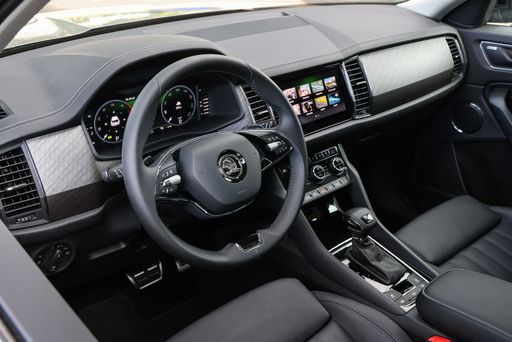 @ Škoda Auto a.s. / Škoda Storyboard
@ Škoda Auto a.s. / Škoda Storyboard
 @ Peugeot / Stellantis Media
@ Peugeot / Stellantis Media
|
 @ Škoda Auto a.s. / Škoda Storyboard
@ Škoda Auto a.s. / Škoda Storyboard
|
|
|
|
Costs and Consumption |
|
|---|---|
|
Price
24500 - 40300 £
|
Price
36800 - 49600 £
|
|
Consumption L/100km
4.9 - 5.7 L
|
Consumption L/100km
0.4 - 8.2 L
|
|
Consumption kWh/100km
15.50 kWh
|
Consumption kWh/100km
-
|
|
Electric Range
406 km
|
Electric Range
113 - 123 km
|
|
Battery Capacity
51 kWh
|
Battery Capacity
19.70 kWh
|
|
co2
0 - 129 g/km
|
co2
9 - 186 g/km
|
|
Fuel tank capacity
44 L
|
Fuel tank capacity
45 - 58 L
|
Dimensions and Body |
|
|---|---|
|
Body Type
SUV
|
Body Type
SUV
|
|
Seats
5
|
Seats
5
|
|
Doors
5
|
Doors
5
|
|
Curb weight
1263 - 1623 kg
|
Curb weight
1684 - 1970 kg
|
|
Trunk capacity
434 L
|
Trunk capacity
745 - 910 L
|
|
Length
4304 mm
|
Length
4758 - 4761 mm
|
|
Width
1770 mm
|
Width
1864 mm
|
|
Height
1523 mm
|
Height
1663 - 1683 mm
|
|
Max trunk capacity
1467 L
|
Max trunk capacity
1945 - 2105 L
|
|
Payload
407 - 447 kg
|
Payload
460 - 563 kg
|
Engine and Performance |
|
|---|---|
|
Engine Type
Petrol, Electric, Petrol MHEV
|
Engine Type
Plugin Hybrid, Petrol, Petrol MHEV, Diesel
|
|
Transmission
Manuel, Automatic
|
Transmission
Automatic
|
|
Transmission Detail
Manual Gearbox, Reduction Gearbox, Dual-Clutch Automatic
|
Transmission Detail
Dual-Clutch Automatic
|
|
Drive Type
Front-Wheel Drive
|
Drive Type
Front-Wheel Drive, All-Wheel Drive
|
|
Power HP
101 - 156 HP
|
Power HP
150 - 265 HP
|
|
Acceleration 0-100km/h
8.3 - 10.9 s
|
Acceleration 0-100km/h
6.3 - 9.7 s
|
|
Max Speed
150 - 206 km/h
|
Max Speed
205 - 231 km/h
|
|
Torque
205 - 270 Nm
|
Torque
250 - 400 Nm
|
|
Number of Cylinders
3
|
Number of Cylinders
4
|
|
Power kW
74 - 115 kW
|
Power kW
110 - 195 kW
|
|
Engine capacity
1199 cm3
|
Engine capacity
1498 - 1984 cm3
|
General |
|
|---|---|
|
Model Year
2023 - 2025
|
Model Year
2024 - 2025
|
|
CO2 Efficiency Class
D, A, C
|
CO2 Efficiency Class
B, F, G, E
|
|
Brand
Peugeot
|
Brand
Skoda
|
Is the Peugeot 2008 offered with different drivetrains?
The Peugeot 2008 is available as Front-Wheel Drive.
The prices and data displayed are estimates based on German list prices and may vary by country. This information is not legally binding.
